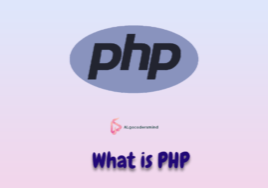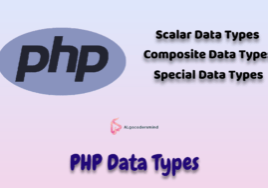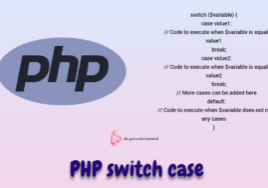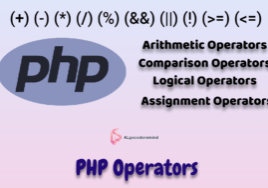Database Connection in PHP: PDO, Procedural, and OOPs Approach
Introduction
In the world of web development, databases play a vital role in storing and retrieving data. PHP, being a popular server-side scripting language, offers multiple approaches for connecting to databases. In this article, we will explore three different methods of establishing a database connection in PHP: PDO (PHP Data Objects), procedural, and object-oriented programming (OOPs). We will delve into the details of each approach, highlighting their benefits and use cases.
Table of Contents
1. Understanding PHP Database Connection
Before diving into the specifics of different connection methods, let’s have a brief overview of PHP database connection. It is a process of establishing a link between PHP and a database management system (DBMS) to perform various database operations such as inserting, updating, deleting, and querying data.
2. Connecting to a Database using PDO
2.1 Installing and Configuring PDO
To use PDO, you need to ensure that it is enabled in your PHP installation. You can check if PDO is enabled by running the phpinfo() function. If PDO is not enabled, you can enable it by modifying your PHP configuration file.
2.2 Establishing a Connection
To establish a connection to a database using PDO, you need to create a new instance of the PDO class, providing the necessary credentials such as the database host, username, password, and database name. Here’s an example:
<?php
$host = 'localhost';
$dbname = 'mydatabase';
$username = 'root';
$password = 'mypassword';
try {
$pdo = new PDO("mysql:host=$host;dbname=$dbname", $username, $password);
// Connection successful
} catch (PDOException $e) {
die("Connection failed: " . $e->getMessage());
}
?>2.3 Performing Database Operations
Once the connection is established, you can use various PDO methods to perform database operations like executing queries, fetching data, and manipulating records. PDO provides a secure and flexible way to interact with databases, supporting multiple database drivers.
3. Connecting to a Database using Procedural Approach
The procedural approach is the traditional way of connecting to a database in PHP. It involves a series of procedural functions provided by PHP, such as mysqli_connect() and mysqli_select_db(). Here’s an example:
<?php
$host = 'localhost';
$dbname = 'mydatabase';
$username = 'root';
$password = 'mypassword';
$conn = mysqli_connect($host, $username, $password);
if (!$conn) {
die("Connection failed: " . mysqli_connect_error());
}
$db_selected = mysqli_select_db($conn, $dbname);
if (!$db_selected) {
die("Database selection failed: " . mysqli_error($conn));
}
// Connection successful
?>4. Connecting to a Database using Object-Oriented Programming (OOPs)
The object-oriented approach offers a more organized and reusable way of connecting to databases. It involves creating a class for the database connection and utilizing objects and methods to perform database operations. Here’s
an example:
<?php
class DatabaseConnection {
private $host = 'localhost';
private $dbname = 'mydatabase';
private $username = 'root';
private $password = 'mypassword';
public $conn;
public function __construct() {
try {
$this->conn = new PDO("mysql:host=$this->host;dbname=$this->dbname", $this->username, $this->password);
// Connection successful
} catch (PDOException $e) {
die("Connection failed: " . $e->getMessage());
}
}
}
// Create a new instance of the DatabaseConnection class
$database = new DatabaseConnection();
?>5. Choosing the Right Approach
When it comes to choosing the right approach for connecting to a database in PHP, several factors come into play. Consider the following points to make an informed decision:
- Scalability: If your project requires scalability and flexibility, PDO and OOPs approaches are recommended due to their ability to work with different database drivers.
- Security: PDO is considered more secure than the procedural approach as it provides prepared statements and parameterized queries, helping to prevent SQL injection attacks.
- Code Organization: OOPs approach offers better code organization and reusability through classes and objects, making maintenance and updates easier in the long run.
- Project Requirements: Consider the specific requirements of your project, the database system you are using, and the level of complexity involved in the database operations.
6. Conclusion
Establishing a database connection in PHP is a fundamental step in building web applications that interact with databases. In this article, we explored three different methods: PDO, procedural, and object-oriented programming (OOPs). Each approach has its own advantages and use cases, so choose the one that best fits your project requirements. Remember to prioritize security, scalability, and code organization when making your decision.
Frequently Asked Questions
Q: Which PHP approach is more secure for database connections?
A: PDO is considered more secure than the procedural approach as it provides prepared statements and parameterized queries to prevent SQL injection attacks.
Q: Can I switch between different database systems easily using PDO?
A: Yes, PDO provides a consistent interface for working with different database drivers, making it easier to switch between database systems.
Q: Is the object-oriented approach recommended for small projects?
A: The object-oriented approach offers better code organization and reusability, which can benefit projects of any size. However, for small projects with simple requirements, the procedural approach may suffice.
Q: Are there any performance differences between PDO and the procedural approach?
A: In terms of performance, both PDO and the procedural approach are efficient. The choice between them should be based on other factors like security, scalability, and code organization.
Q: How can I ensure the database connection is closed properly?
A: In the case of PDO, the connection is automatically closed when the PDO object is destroyed. For the procedural approach, you can use the mysqli_close() function to close the connection explicitly.
Our Recommendation
- Session and Cookies in PHP: A comprehensive guide
- PHP Data Types – A Comprehensive Guide with Code Examples
- PHP Switch Case: Structure for Efficient Code Execution
- PHP Operators with Code Example: A Comprehensive Guide
- PHP Variable Scope: Mastering the Fundamentals for Efficient Code
- Implode and Explode in PHP tutorial
- PHP String Functions: Enhancing String Manipulation tutorial
- Exploring Array in PHP: A Comprehensive Guide
- Oops Concepts in PHP: A Guide with Code Examples
- Ternary Operator in PHP: Examples and Best Practices
- Pagination in PHP and MySql: Simplify Your Data Display and Navigation
- Secure and Simple: Forgot Password in PHP
- Login in PHP Secure & Reliable
- CRUD Operation in PHP: A comprehensive guide
- Inheritance in PHP: A comprehensive guide
Akhand Pratap Singh
Related Post
Newsletter
Recent Posts
- How to Upload Image into Database Using PHP
- Inheritance in PHP: A comprehensive guide
- Image Resize in Laravel 10 : A comprehensive Guide
- Laravel Passport: A comprehensive guide in Laravel 10
- Laravel JWT Tutorial: A comprehensive guide
- Import and Export Excel in Laravel: A Step-by-Step Guide
- Rest API in PHP: Building Powerful and Scalable Web Services
- Array to String in PHP – A Comprehensive Guide
- Event Loop in JavaScript: A comprehensive guide
- Ternary Operator in JavaScript: A Comprehensive Guide










